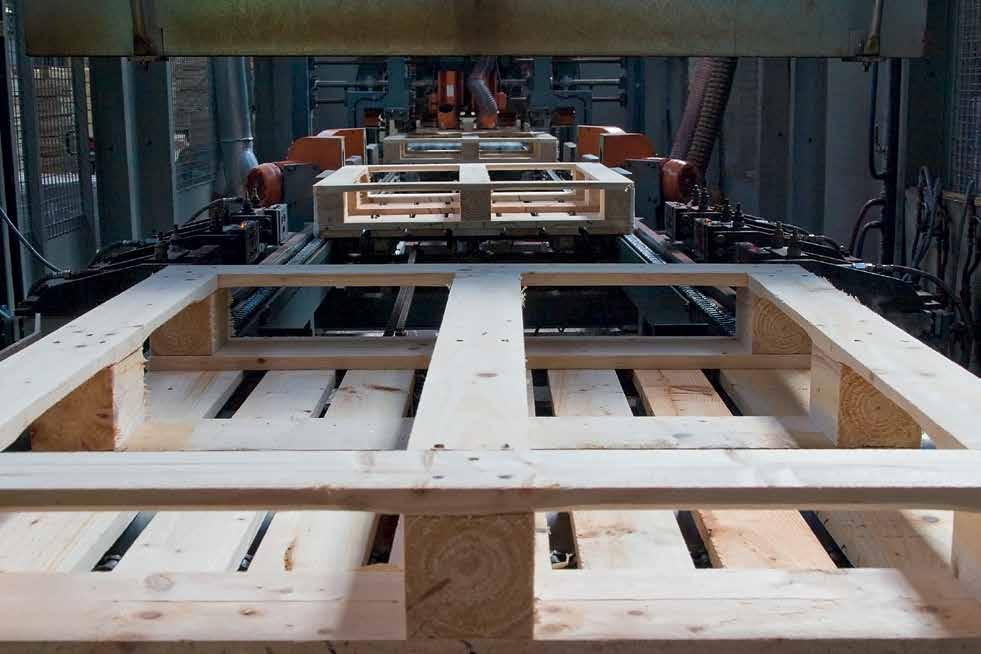INTERNATIONAL
Supply and demand, demand and supply by Andrew Heald “Just to settle it once and for all: Which came first, the chicken or the egg? The egg – laid by a bird that was not a chicken.” Neil deGrasse Tyson
I
am very lucky to be able to occasionally take time away from my Confor role, and work with WWF International on their New Generation Plantations (NGP) Project. Whether it is Uganda, Uruguay or UK, many of the sustainability challenges facing forestry companies and local communities are very similar. On a recent visit to Uganda, I was struck by the parallels with the UK and the issues and the need for predictable long term timber supply. When I first visited Uganda in early 2018, the UK timber market was strong and prices for home grown timber were high. in November 2019 the market has moved considerably and we are seeing the full impact of very large scale sanitation felling in parts of Europe to control Ips typographus.
The supply and demand puzzle in the forestry sector is a key challenge whether your rotations are ten years in Uganda or 40 years in the UK. People won’t plant trees unless there’s a reliable future market demand for timber – and people won’t invest in sawmills and processing unless there’s a reliable future timber supply. In 1919, the UK Government decided to tackle this conundrum by passing the Forestry Act and founded the Forestry Commission, thereby driving the creation of largescale plantations directly funded by public money. In 2019, Uganda faces similar challenges with an increasing demand for forest products, but compounded by rapidly disappearing natural forests. In the early 1990s Uganda had 24% forest cover, it is now 8%.
Unregulated With a large percentage of the timber market being unregulated it is challenging for legitimate businesses in Uganda to invest and expand. The post-colonial history of East Africa has not been stable and
Uganda’s political and population challenges often begin outside its borders, adding risk for investors. In a country with one of the fastest-growing populations in the world, with a huge demand for timber in construction and whose natural forests are rapidly disappearing, there would seem to be a huge opportunity to develop sawmills and expand the plantation sector. If we want to support and expand sustainable plantations and a sustainable timber supply chain in Uganda (and the UK), then we need to support the growth of small and medium-sized enterprises (SMEs) in the supply chain. It is SMEs that will grow much of the timber, harvest the timber, haul the timber, replant the plantations and maintain them, and use the secondary products. If we can support an economy where these SME have the confidence to invest and grow, then we have some of the key building blocks for a sustainable forest economy. A wide range of small businesses is also more resilient to changes in economic fortune. These SMEs will probably need the ‘heft’ of a bigger
MAIN CHALLENGES FOR UGANDA’S FORESTRY SECTOR ‘Informal’ timber: There is a big demand for Ugandan timber in the ‘informal’ sector – often sold at the roadside without the usual accounting procedures. Timber sold without VAT will be 18% cheaper than identical timber in the formal sector. Export ban: The Ugandan government has imposed a ban on timber exports, to tackle rampant deforestation and encourage investment into Ugandan sawmilling (although timber exports are a minor driver of deforestation, behind clearance for farmland and local charcoal and fuelwood demand). This limits market development for Ugandan companies. Data: Investment in timber processing requires a knowledge and confidence in future timber supply. On my visits to Uganda I have been told that there are 60,000ha of plantations; I’ve also been told that there are 120,000ha. Any investor needs reliable information onha, location, species and growth rates.
64 FORESTRY & TIMBER NEWS • December 2019
Standards: Timber and forest products are usually cut to standard sizes and graded by strength. If an architect or engineer specifies that a roof truss is built with C24 100mm by 50mm timber, then that is what will be supplied. The size of the informal market in Uganda undermines much of the price premium for quality graded timber. There is a role for government and trade associations to more closely regulate timber quality, to level the playing field and improve construction standards. Expertise: Many Ugandans who own plantations aren’t forestry specialists. They have been encouraged to plant trees usually through an incentive scheme (from government or other agencies) and are often unaware of how best to market their timber or trends in market prices. Bringing timber to market only occasionally, perhaps once every 10 years, they are not in a strong position to negotiate. Many also lack silvicultural knowledge on how best to manage their investment in plantations.
CONFOR.ORG.UK























